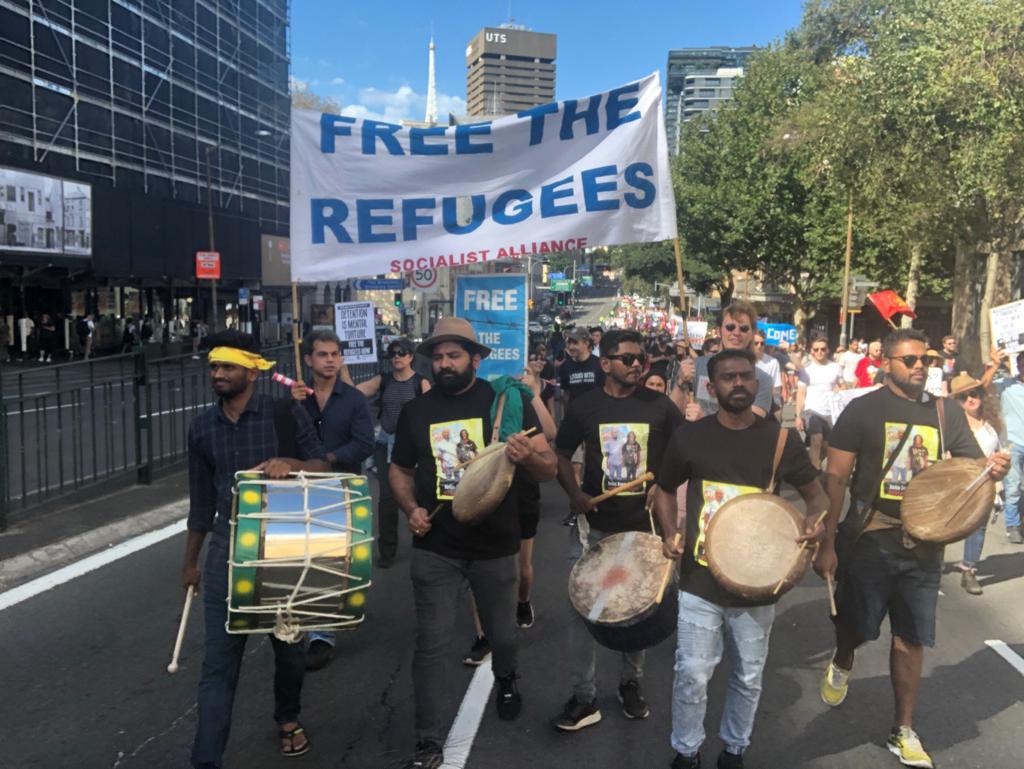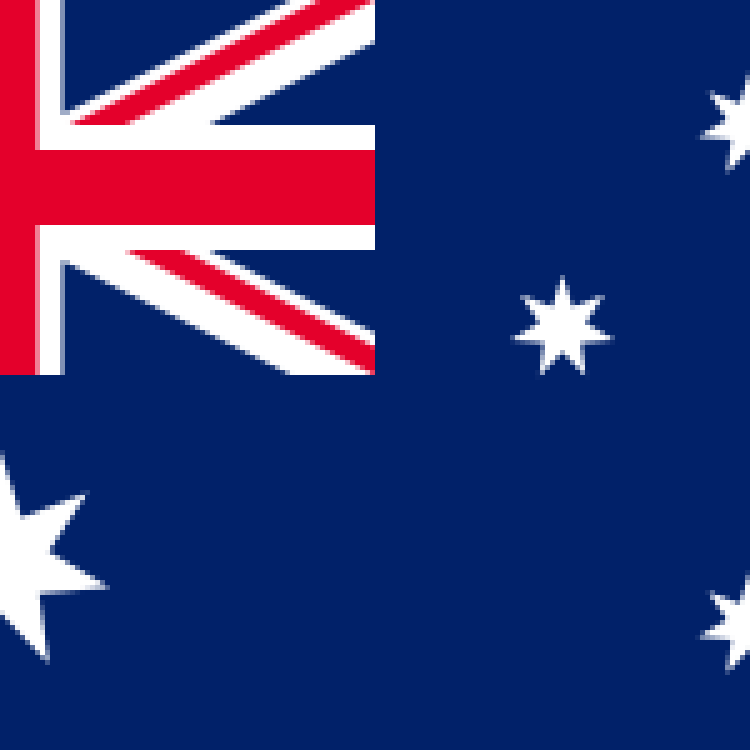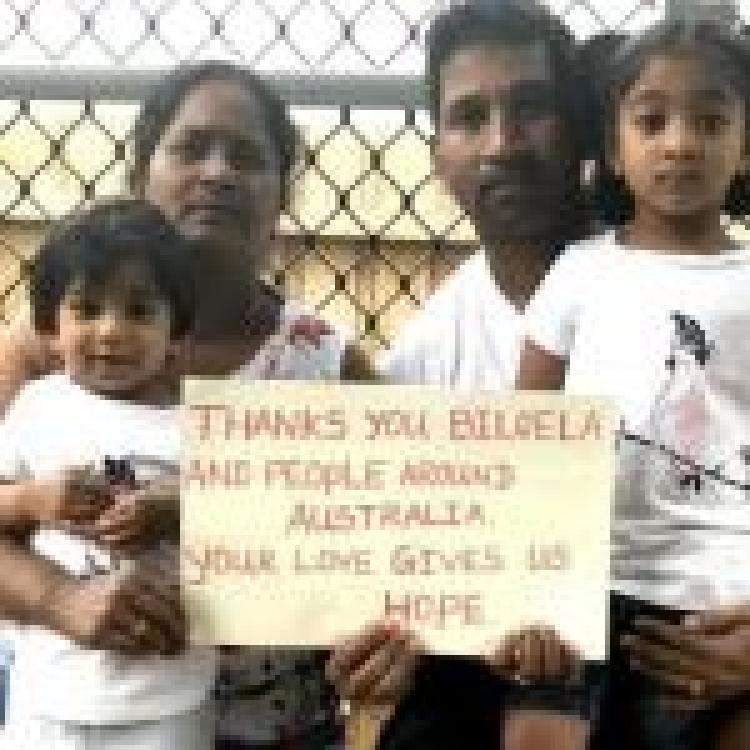Yesterday, an estimated 100 Australian Tamils gathered in Sydney to protest Australia’s continued detention of refugees such as Rajan Navanthirasa and the issuing of temporary bridging visas such as the TPV and SHEV which have been granted to most Tamil refugees.
These demonstrations were part of a nationwide protest in which an estimated thousand people attended.
Speaking to Tamil Guardian, Renuga Inpakumar, a representative of the Tamil Refugee Council, highlighted the issues of these visas stating:
“These visas are temporary and place the refugees under tremendous strain as they are not allowed to unite with their families. There are many instances where some fathers have not seen their wives and children for years. This also means that they are unable to live a life that resembles anything that is normal”.
Australia’s draconian immigration system has been widely condemned with research from the SSM – Population Health highlighting that Australia’s detention centres have left asylum-seekers 200 times more likely to self-harm than the average Australian. Since 2000, at least 12 individuals hoping to migrate to Australia were suspected to have died by suicide while in detention.
Approximately 4,500 asylum seekers from Sri Lanka came to Australia between 2009 and 2013. A further 2,000 people have died over the past two decades trying to reach the country.
Rajan Navanthirasa
The demonstrations in Australia also shed light on the plight of Rajan Navanthirasa a Tamil refugee suffering from leukaemia who has been detained by Australian immigration authorities for over eleven years.
Whilst he was initially granted refugee status, within months of the decision Australian Security Intelligence Organisation (ASIO) gave a negative security assessment and refused to give a reason for this perceived threat. This assessment was withdrawn in 2016, six years after the initial assessment, as it was shown he posed no security risk.

Despite this, his application for refugee status was refused with Australia’s Department for Immigration claiming that the situation in Sri Lanka had improved. This is despite the well-documented evidence of continued practices of torture by the Sri Lankan security forces.
In February 2019 Freedom from Torture reported that Sri Lanka was - for the seventh successive year – “the top country of origin for torture survivors referred… for clinical services and medico-legal reports”.
Speaking at the rally Dr Iyangaran spoke about the issues that the refugees are facing today and the inhumane treatment of refugees.
Ramsiyar Savanayagam spoke on a personal note as he is a refugee who was detained for 8 years and was only released 2 months ago on a 6-month visa.
Renuga Inpakumar also spoke directly on her experiences.
Genocidal regime
Demonstrators at the rally also took aim at the genocidal regime in Sri Lanka, with protesters chanting:
“We want justice”, “Eelam Freedom”, and “release Rajan”.
Renuga Inpakumar further told Tamil Guardian.
We drew attention to the Rajapaksa genocidal regime that is in power today in Sri Lanka and how this was the main reason why the Tamil people fled their own homeland.








